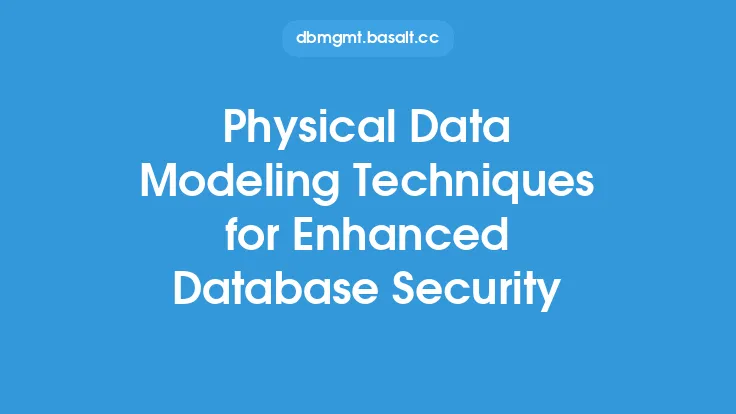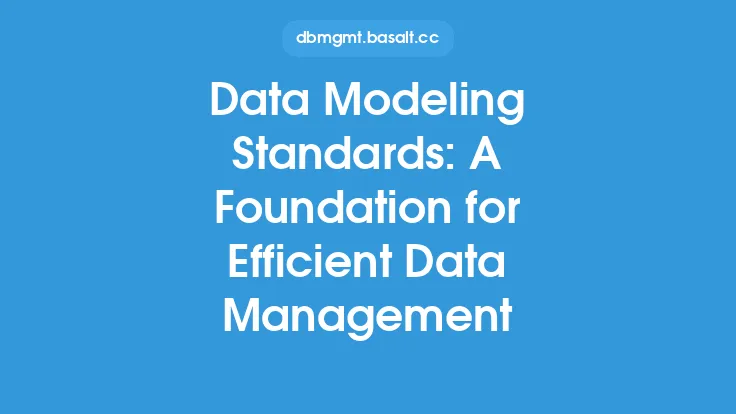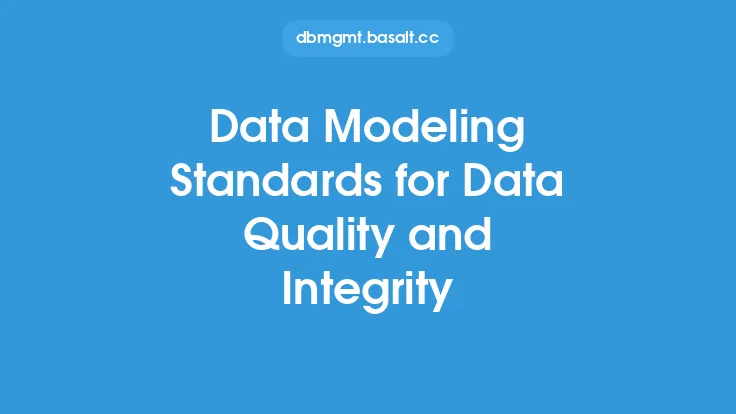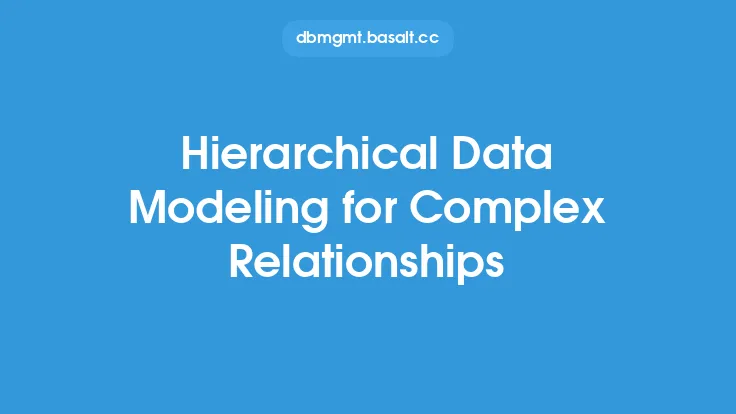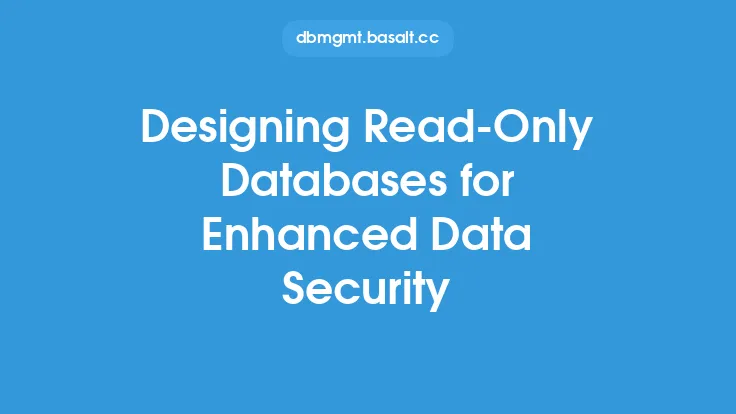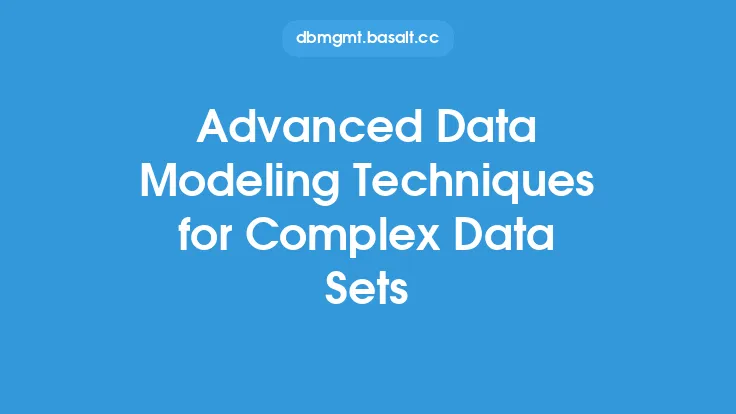Data management is a critical aspect of any organization, as it enables the efficient storage, retrieval, and analysis of data. With the increasing volume and complexity of data, traditional data modeling approaches often fall short in providing a scalable and flexible solution. This is where Data Vault modeling comes into play, offering a robust and adaptable approach to data management. In this article, we will delve into the world of Data Vault modeling, exploring its principles, benefits, and best practices for implementation.
Introduction to Data Vault Modeling
Data Vault modeling is a data warehousing methodology that was first introduced by Dan Linstedt in the early 2000s. It is designed to provide a scalable, flexible, and auditable data storage solution, allowing organizations to manage large volumes of data from various sources. The Data Vault approach focuses on separating the data into three main components: hubs, satellites, and links. Hubs represent the core business entities, such as customers or products, while satellites contain the descriptive attributes of these entities. Links, on the other hand, establish relationships between hubs and satellites, enabling the creation of complex data structures.
Key Components of Data Vault Modeling
The Data Vault modeling approach consists of several key components, each playing a crucial role in the overall data management process. These components include:
- Hubs: As mentioned earlier, hubs represent the core business entities and are the central components of the Data Vault model. They are typically represented by a single table, with each row corresponding to a unique business key.
- Satellites: Satellites contain the descriptive attributes of the hubs and are used to store historical data. They are also represented by tables, with each row corresponding to a specific point in time.
- Links: Links establish relationships between hubs and satellites, enabling the creation of complex data structures. They are used to connect multiple hubs and satellites, allowing for the representation of many-to-many relationships.
- Bridges: Bridges are used to connect multiple links, enabling the creation of complex relationships between hubs and satellites.
Benefits of Data Vault Modeling
The Data Vault modeling approach offers several benefits, including:
- Scalability: Data Vault models are designed to scale horizontally, allowing organizations to handle large volumes of data from various sources.
- Flexibility: The Data Vault approach provides a flexible data structure, enabling organizations to adapt to changing business requirements.
- Audibility: Data Vault models provide a clear audit trail, allowing organizations to track changes to the data over time.
- Data integration: The Data Vault approach enables the integration of data from multiple sources, providing a unified view of the organization's data.
Best Practices for Implementing Data Vault Modeling
To ensure the successful implementation of Data Vault modeling, several best practices should be followed:
- Define clear business requirements: Before implementing a Data Vault model, it is essential to define clear business requirements and understand the organization's data needs.
- Use standardized naming conventions: Standardized naming conventions should be used throughout the Data Vault model to ensure consistency and readability.
- Use data validation: Data validation should be used to ensure the accuracy and consistency of the data.
- Monitor and maintain the model: The Data Vault model should be regularly monitored and maintained to ensure it remains aligned with the organization's changing business requirements.
Data Vault Modeling Tools and Technologies
Several tools and technologies are available to support the implementation of Data Vault modeling, including:
- Data warehousing platforms: Data warehousing platforms, such as Amazon Redshift and Google BigQuery, provide a scalable and flexible environment for implementing Data Vault models.
- ETL tools: ETL (Extract, Transform, Load) tools, such as Informatica and Talend, are used to extract data from various sources, transform it into a standardized format, and load it into the Data Vault model.
- Data modeling tools: Data modeling tools, such as Erwin and PowerDesigner, are used to design and implement the Data Vault model.
Challenges and Limitations of Data Vault Modeling
While Data Vault modeling offers several benefits, it also presents several challenges and limitations, including:
- Complexity: Data Vault models can be complex and difficult to understand, requiring specialized skills and knowledge.
- Data quality: Data quality issues can arise if the data is not properly validated and cleansed before loading it into the Data Vault model.
- Performance: Data Vault models can be resource-intensive, requiring significant computational power and storage capacity.
Real-World Applications of Data Vault Modeling
Data Vault modeling has been successfully implemented in various industries and organizations, including:
- Finance: Data Vault modeling is used in the finance industry to manage large volumes of transactional data and provide real-time analytics.
- Healthcare: Data Vault modeling is used in the healthcare industry to manage patient data and provide insights into treatment outcomes.
- Retail: Data Vault modeling is used in the retail industry to manage customer data and provide personalized marketing campaigns.
Conclusion
In conclusion, Data Vault modeling is a powerful approach to data management, offering a scalable, flexible, and auditable solution for managing large volumes of data. By understanding the key components, benefits, and best practices of Data Vault modeling, organizations can unlock the full potential of their data and gain a competitive advantage in the market. While Data Vault modeling presents several challenges and limitations, its benefits make it an attractive solution for organizations seeking to improve their data management capabilities. As data continues to play an increasingly important role in business decision-making, the importance of Data Vault modeling will only continue to grow.
